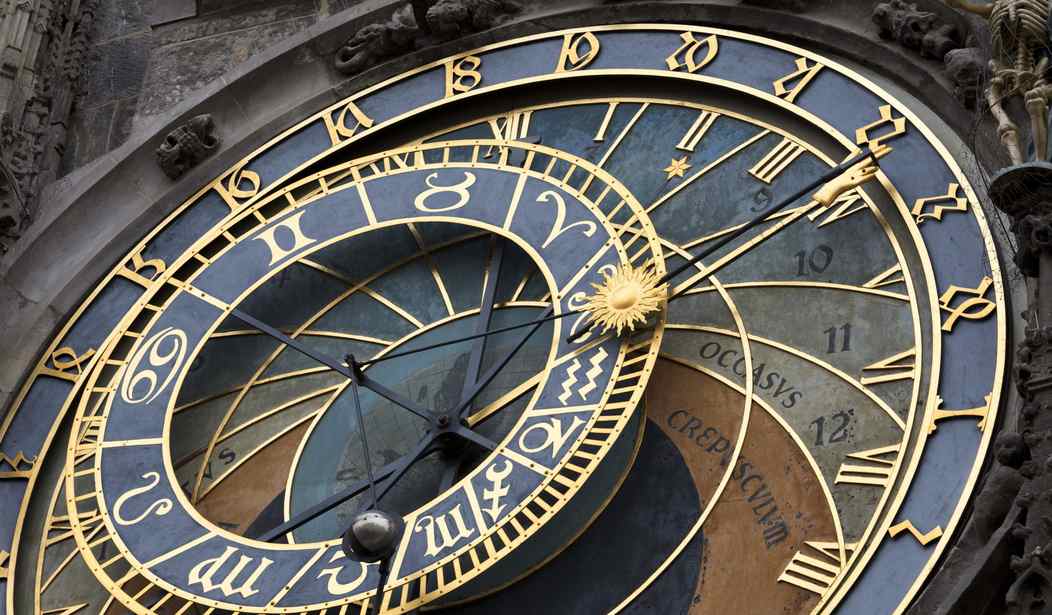We normally call the years from about 476 (the fall of Rome to the Goths) to about 1400 the “Middle Ages” or the “medieval world,” and the first three or four hundred years of these medieval years are usually “the Dark Ages.” It’s kinda funny to me, because the people who lived back then didn’t know that their lives were in the middle of two great eras (the ancient world and the modern world), and they certainly did not think they were “in the dark!”
Their world WAS the modern world for them! Life did not just stand still when Rome fell. The sun came up the next day and people got on with their lives: dreaming, building, inventing. There are plenty of things I could list, but here are a few ideas, institutions, and inventions we take for granted in our oh-so-sophisticated world, but were actually started well over a thousand years ago!
1. Limited government.
Yes, you read that right. This concept that we believe is a cornerstone of our freedom was hotly debated (and even lived out in some areas) in the medieval world. The Roman Catholic Church was the religious influence in western Europe, and it clearly told ruling dynasties that they could not dictate to the Church (especially in matters of conscience). Ambrose of Milan rebuked the Roman Emperor Theodosius I, and Pope Gregory VII threatened King Henry IV with excommunication over the Investiture Controversy.
The Church would quote Jesus’ teaching in Matthew 22:21 that we should give to Caesar what belongs to him, and to God what belongs to Him. The whole earth belongs to God, yet certain aspects of governing people (collecting taxes, raising armies, building bridges, etc.) belong to the secular authorities.
And those authorities are to stay out of Church dealings (such as appointing bishops), while the Church is supposed to foster a moral consciousness that provides the foundation of good government. (Thou shalt not steal, lie, murder or commit adultery are pretty good moral absolutes for politicians and spiritual authorities to pay attention to, I think.)
The western Europeans of the medieval world definitely struggled with this clash between church and state. They were often very inconsistent with it — for example the Pope was not only the spiritual authority, but also a head of state in central Italy for hundreds of years. But it was a good clash that Christendom made its peace with, and the idea eventually took root in America’s constitutional republic. It is important to note that the idea that government is not sovereign did not arise from any other culture (e.g. Islamic, Hindu, Chinese, or other pagan societies).
One shining example of a truly free, limited government was the Republic of Venice. For over 1300 years they elected their own rulers who operated by a strict set of laws. The Venetians were the freest people in Europe for centuries.
Next Page: Equality, universities, and even hospitals!
2. Equality.
The Church also taught that no ruler was above the law. Since all humans (male and female) were made in the image of God, all had the same origin, the same nature, the same sin, and the same possible redemption. Since the Apostle Paul declared in Galatians 3:28 that there is no ethnic, class, or gender distinction in Christ but rather that we are all equal in Him, it seemed reasonable to believe that everyone was subject to the same laws.
Of course, this was not worked out very well much of the time, but in the Magna Carta of 1215 the rights and freedoms of English barons were written down for all to see and made legally binding. The king was forced to sign a document stating that he was not above the law and had to abide by the same rules for everyone.
3. Universities.
By the 11th century, monasteries were branching out and creating large independent full-time schools that taught not just theology, but also astronomy, science, and medicine. The clergy conferred degrees on people whom they trained in certain scholarly skills.
The University of Bologna is the oldest continuing university in the world, beginning 1088. The University of Paris (c. 1150) and the University of Oxford followed thereafter (1167). Before, education in the ancient and medieval worlds was mostly done with individual instructors and a few students. Now whole faculty were created to teach numbers of pupils in regulated courses of study with planned out curricula.
4. Hospitals.
The idea actually began with Christians in the waning days of the Roman Empire. Churches in the eastern Roman Empire constructed compounds with separate housing for doctors and nurses! These institutions were built specifically for the care of all people.
By the 12th century, the capital of the Byzantine Empire had two fully-staffed hospitals with special wards for various diseases (including leprosy). One of the first hospitals in western Europe was in Merida, Spain in 580, founded by the bishop Masona. All people were welcomed — Christians, Jews, and pagans.
Next Page: Banks, clocks, and … glasses?
5. Banks.
Modern concepts of banking began in Italy in the 1300s. Bills of exchange, savings accounts, and bonds were all created at that time in Florence, Venice, and Genoa. The word “bank” itself comes from the Italian word “banca” which means “counter”: the place where these financiers would sit and do business.
6. Clocks.
Our lives are governed by time. So we can thank some enterprising Italians somewhere around 1275 for creating the first truly mechanical clock to measure our time (and dominate our lives). Sundials and water clocks had been used by the Egyptians, Romans, and Chinese for centuries, but the clock — where gears and wheels advance the hands of the clock at regular intervals — you can thank some enterprising genius in Italy for that!
7. Eyeglasses.
Once again, the Italians come through for us. The first pair was made in Italy by glass blowers around 1286. The first time eyeglasses were mentioned are by a Dominican friar, Giordano da Pisa, in 1306. We see the first painting of someone with glasses in 1352.
Glasses were either held by the hands or balanced on the nose. Not until 400 years later did someone come up with the idea of building frames that would rest along the side of the head and behind the ear. Took a while.
Next page: Small letters, and orphanages.
8. Carolingian minuscule.
Carol what? Minuscule is writing with both upper case AND lower case letters. Lower case letters were created in 780 by Benedictine monks in northern France. Before they used only capital letters. Now, these creative monks used both sized letters as we do today, actually put spaces between letters, and created punctuation — like the question mark! Imagine writing a term paper if these monks had not done their job 1300 years ago. Ugh.
9. Orphanages.
Infanticide was common in the ancient Greek and Roman worlds. If a child was unwanted or deformed in some way, the father would legally leave the infant exposed to the wild animals or the elements. (It is true that the pagan Athenians believed in caring for the orphans of slain warriors.)
But the Bible specifically told people to take care of all widows and orphans. Unwanted, abandoned children were cared for in the Middle Ages by monks and nuns who took Jesus’ commands seriously to care for the most helpless. Orphanages were originally just the monasteries where the children would be educated and taught a trade.
It was not until the 18th century that orphanages separate from monasteries or churches were created in Europe. And now these institutions are on every continent taking care of children who are the victims or poverty, war, and disease.
That is just a small sampling of Europe’s contributions from those not-so-dark ages of long ago. But Europe did not do it alone. There are some fascinating contributions from the Islamic world of that era, and I’ll comment on those in the next article!









Join the conversation as a VIP Member